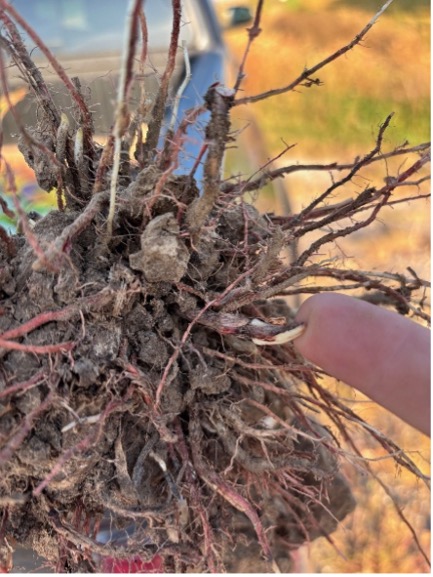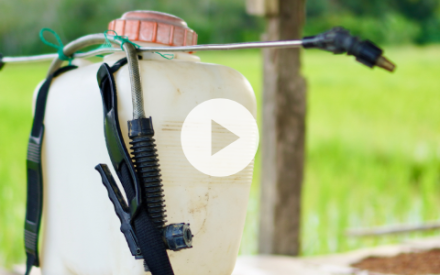Johnsongrass is a highly invasive perennial grass that invades and impacts agricultural and natural areas throughout the United States. While historically its distribution has been limited to states to the south of Wisconsin, we have seen populations popping up in southern Wisconsin along roadsides, agricultural fields and recent restoration activities. See the map for a glimpse of current distribution across the country and photos to help you identify Johnsongrass below.
To add complexity, Johnsongass can hybridize with grain sorghum and shattercane (annual weedy sorghum), making identification even more difficult.


We want to better understand the distribution of Johnsongrass in Wisconsin. We are asking for your help! If you see a grass that you think is Johnsongrass, please collect some information and samples and provide them to us. This will help us understand the distribution of this species and its hybrids throughout the state, create resources to help differentiate johnsongrass from look-alike species (shattercane), and identify if populations are resistant to herbicides we use to manage them.
For information on how to identify Johnsongrass, please click here.
Interested in sharing information about a local suspected johnsongrass population? Please fill out this survey.
Collecting Johnsongrass Information Using Online Form
Please have the following details ready when filling out the survey:
- Name the location: we suggest using the local city, road, or other unique features of the area
- Provide the GPS coordinates of the location
- Take pictures: we suggest images of the entire plant/infestation and closeups of the inflorescence, a fully expanded leaf (include ruler for diameter), root ball and if rhizomes are present (knock away soil from center of root ball)
- Estimate average height of plant: provide an exact length to the nearest foot if possible.
- Collect plant specimens for confirmation of ID: we would recommend the following below, may be easiest to collect one entire plant
- Inflorescence
- Seeds
- Leaf sheath (where leaf attaches to stem)
- Root ball (will be used to see if rhizome is present)
- Add any comments on infestations
- In what crop
- How large is infestation
- Does the population look like it originated from a perennial plant (see patches with adult mature plants and young immature)
Collecting Johnsongrass Information Without Online Form
Please collect the information listed above and email the information to Mark Renz. Keep plant samples in a dry place, and we will coordinate pickup over fall.
Understanding Johnsongrass Herbicide Resistance
Are you concerned about herbicide resistance? If so, please collect seedheads from 20 mature Johnsongrass plants.
- Collect plants as far apart as possible within the field to represent the population.
- Place all seedheads from the same field in the same paper bag (leave paper bags open until samples are dry). Properly ID the sample bag.
- Store the samples in a dry environment.
- When dry, mail or deliver samples to Rodrigo Werle (1575 Linden Drive, Madison, WI 53706).
What does Johnsongrass look like?
Find pictures here.





 ▶ Combine Cleaning: A Simple Step to Reduce Weed Seed Dispersal
▶ Combine Cleaning: A Simple Step to Reduce Weed Seed Dispersal ▶ Backpack Sprayers in Diversified Vegetable Systems
▶ Backpack Sprayers in Diversified Vegetable Systems ▶ AI in Agriculture
▶ AI in Agriculture ▶ Considerations for 2026 Seed Selection
▶ Considerations for 2026 Seed Selection


